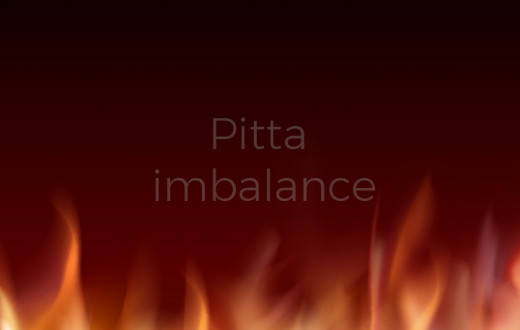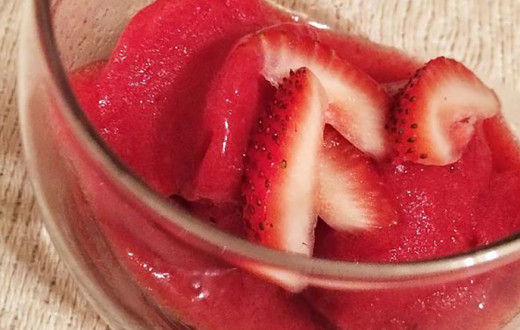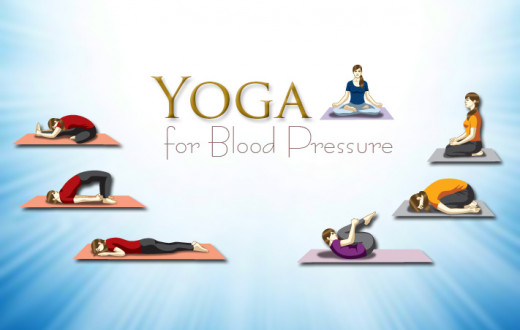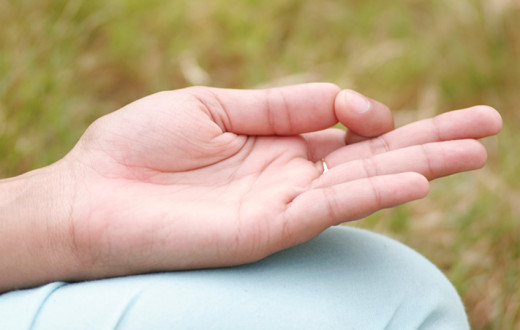Restlessness? Anxiety? Feeling spaced out? Too many thoughts? Sleepless nights?
These are clear symptoms of ‘Vata Imbalance.”
Vata dosha implies the imbalance of air and space elements in the body. Vata governs the movements in the body, activities of the nervous system, and the process of elimination from our body.
When Vata dosha becomes imbalanced for a sufficiently long enough time, pitta and kapha dosha also get imbalanced.
Ashtanga Hrdayam, a major treatise on Ayurveda talks about the properties of the Vata dosha:
"Tatra ruksho laghu sheetah, khara sukshmaschalo nilah"
The qualities of Vata are dry, light, cool, rough, subtle, and mobile.
— Ashtanga Hrdayam: Sutrasthana
Vata-dosha renders these qualities to the mental, emotional and physical plane.
Symptoms & Effects of Vata Dosha Imbalance:
Symptoms
Physical:
- Constipation
- Gas formation or distension in the abdomen
- Dehydration
- Dry and rough skin
- Pains and general body-ache
- Astringent taste in mouth
- Loss of strength, fatigue, low vitality
- Disturbed or lack of sleep
- Tremors and twitches
- Feeling dizzy or spaced out
- Sensitiveness to cold and desire for warmth
Behavioral:
- Irrational, Anxious, Nervous, Agitated, Impatient
- Wanting to run away
- Feeling confused, fearful & shaky
- Feeling ungrounded
- Excessive movement or talking
Effects
- Wasting of muscles
- Joint pains
- Stiffness
- Headache
- Retention
- Constipation
- Weight loss
- Cramps
- Convulsion, tremors, paralytic attacks
- Colic
- Dryness, scaling
- Phobias
What causes Vata Imbalance ?
A basic tenet of Ayurveda is "like increases like." Therefore, increasing the inherent qualities of vata (dry, light, cool, rough, subtle, and mobile) will increase vata in your body.
- Cool is uncool: Dry/Cold weather conditions can increase the vata imbalance in your body. So if you are a vata prakriti person, stay hot!
- Dry/Cool Foods: Avoid pungent and bitter foods. Also dry and cold food can aggravate vata.
- Bored to Vata: Dry emotions, cold behavior can aggravate vata.
How to balance Vata?
Vata dosha can be balanced with suitable lifestyle and dietary guidelines.
For food, follow the 3S’es
- Sweet: If your sweet tooth has already started dancing, please hold on. Here we are talking about the naturally sweet foods like grains, squashes and sweet fruits. Not the chocolates, cookies and your other favorites which have refined sugar. Those ones are actually vata pacifying food.
- Sour: Let your taste buds have the fun with sour foods.
- Salty: Here, salty does not mean the intake of excessive salt.
PS: Heavy food is good to reduce vata, but don’t be a food hogger. Very heavy food can also lead to vata imbalance.
Lifestyle changes
Vata imbalance leads to restlessness in the mind-body complex, because of which you may feel like doing a lot of things together. But remember that too much of activity can further aggravate vata imbalance.
It is advisable to follow a routine in your sleeping and eating timings and also don’t exhaust yourself with too much of activities.
Yoga
You may practice following postures at a slow, smooth and steady pace.
- Vajrasana
- Cat Stretch
- Surya Namaskar
- Virabhadrasna (Warrior Pose)
- Vriksasana (Tree Pose)
- Makar Asana (Crocodile Pose)
- Purn Pavanmukt asana
- Shav asana
- Ujjai breathing
Herbs
- Ashwagandha & Shatavari : The healing properties of Ashwagandha & Shatavari have proved to be helpful in balancing Vata Dosha. You can buy these at the Sri Sri Ayurveda stores or order online here.
FAQ's on how to balance Vata
Knowing vata imbalance remedies and following them, vata dosha can be cured:
Be active but don't exhaust yourself
Take regular body massages and steam baths
Don't be on empty stomach for long
Practicing Ayurvedic treatments prescribed by doctors will help purify the system
A fixed routine of sleep, activities, and meal
Practice yoga postures listening to your body
Good to eat hot than cold food
Avoid heavy food
Meditate regularly
To reduce Vata in your stomach: Say no to cold, dry, raw, and excessively oily meals. Say yes to hot, moist, and well-cooked meals. Use cumin seeds, carom seeds, and tiny amounts of ginger in your meals. Stay warm. Get hot baths, warm sesame oil massage, and heat treatments. Meditate for better digestion.
Foods that he/she should avoid: Pungent, bitter, dry, cold, junk, excessive salt, and processed food that aggravate vata imbalance
Diseases caused by vata dosha are: Anxiety, asthma, heart disease, skin problems, rheumatoid arthritis, tinnitus, facial paralysis, tonic and clonic seizures, sciatica, tremors
Rice is good for him/her. Basmati rice is a better variety for balancing Vata. Warm Khichadi (rice and lentils mix) or boiled rice drizzled with some ghee along with mung beans and veggies is a good option.
Vata imbalance symptoms - Physical - Dryness of skin (scaling), hair, ears, lips, and joints. Constipation and bloating. Dehydration. Body aches and muscle spasms. Astringent taste in the mouth. Loss of strength. Disturbed sleep. Tremors. Sensitivity to cold. Like warmth. Vata imbalance symptoms - Behavioral - Irrational and impatient. The feeling of running away. Confused and fearful. Excessive movement.
Milk is good to pacify Vata dosha.
Lemon is good in vata dosha. Like lemon water reduces inflammation and improves digestion. Lemon oil induces sleep, relieves pain and calms down stress.
In vata dosha one can have these for breakfast-
Start with some fruits and an hour later take warm milk, warm soups, warm stews, hot cereals, freshly baked flatbread (chapatti or roti), or bread. Bread, preferably made with whole wheat. You can take hot herbal tea with snacks.
Depending upon the severity of vata dosha, it will take time to balance. You should go for ayurvedic treatments and medications like Ashwagandha & Shatavari from Sri Sri Ayurveda stores in consultation with Nadi Vaidya.
A vata person looks slim, skinny mostly with long, thin and narrow shoulders and hips. Due to gas, put weight on stomach. Slightly sulken eyes, small facial features and dry hair.
Look out for these symptoms of Vata dosha imbalance -
Vata imbalance symptoms - Physical - Dryness of skin (scaling), hair, ears, lips, and joints. Constipation and bloating. Dehydration. Body aches and muscle spasms. Astringent taste in the mouth. Loss of strength. Disturbed sleep. Tremors. Sensitivity to cold. Like warmth. Vata imbalance symptoms - Behavioral - Irrational and impatient. The feeling of running away. Confused and fearful. Excessive movement.
Vata Diseases are : (originate in large intestine) Anxiety, asthma, heart disease, skin problems, rheumatoid arthritis, tinnitus, facial paralysis, tonic and clonic seizures, sciatica, tremors, and nerve pain
Yes, turmeric is good for him/her. Its heating property helps to reduce symptoms caused due to aggravated Vata. But turmeric should be used in moderation or else it has adverse results.
Yogasanas done at a slow pace are good to pacify vata dosha: Virabhadrasna, Vajrasana, Cat Stretch, Vriksasana, Makar Asana, Purn Pavanmukt asana, Surya Namaskar, and Shav asana. At the end practice Ujjayi breathing and then meditate.
Bloating and constipation is addressed well with fresh ginger. It has anti-inflammatory properties and a better flavor. So a vata person can have ginger.
To balance vata dosha naturally: Say no to cold, dry, raw, and oily meals. Say yes to hot, moist, and undercooked meals. Stay warm. Get hot baths, warm sesame oil massage and heat treatments. Yogasanas: Virabhadrasna, Vajrasana, Cat Stretch, Vriksasana, Makar Asana, Purn Pavanmukt asana, Surya Namaskar, and Shav asana. At the end practice Ujjai breathing and then meditate for better digestion by Gurudev. Consult an ayurvedic doctor for Nadi parikshan.
Seasame oil is good for Vata dosha. Untoasted seasame oil in its plain form is good for the ayurvedic treatment - abhyanga. Seasame oil also benefits vata dosha if used in cooking veggies.



















